The Story Behind Peg 2906
by Norman Cho
How many of us believe in the unexplained? There are reasons why certain things happen unexpectedly. But are we receptive enough to take the cue from such signs? One recent account was of tomb 481 which was pegged 2906 at Bukit Brown Cemetery, slated for exhumation to make way for the 8 lane highway due to slice the cemetery in half by 2017/
A post about the Ee Hoe Hean Club in the Facebook page of Heritage Singapore – Bukit Brown Cemetery, spurred me to do a search on my granduncle, Mr Tan Kay Tiang (ie) the husband of my paternal grandmother’s second sister, Mdm Yeo Say Neo. Grandmother had once told me that he worked for an exclusive millionaires’ club called the Ee Hoe Hean Club. No details of the position which he held or the period where he was under their employment were given.
Out of curiosity, I did a Google search over the internet and found to my astonishment that he was buried in Bukit Brown Cemetery and that his tomb was marked for exhumation with the peg number 2906.
I made a few enquiries and discovered that the tomb had yet to be claimed and that it was due for exhumation in only three weeks! I tried to contact the deceased’s three grandchildren unsuccessfully to make a claim. They are in their fifties and sixties and I sensed their reluctance. They probably have their reasons to decide not to do anything about it.
Looking back, I realised that discovering his tomb just three weeks before the exhumation was no mere coincidence! Possibly, he was trying to reach out to someone to handle his exhumation and to relocate him during the desperate final few weeks. I felt very uncomfortable if I did nothing about it and so I decided to claim the tomb on behalf of the family. To make sure that I had identified the correct tomb, I verified the name of his only child on the headstone – 月娘which corresponded with the name of my late aunt, Guek (Guat) Neo. I found a newspaper article in the online digital archive (Newspapersg) which confirmed the identity of the tomb.
Family accounts has it that he died due to septic wound on his foot caused by a nail which he accidentally stepped on. He had concealed nails on the ground along the exterior wall of his house at Neil Road to deter thieves. The irony was not lost on me that these nails were what caused his death, A newspaper report in The Straits Times, 19 June 1938, “Nail Causes Man’s Death” returned a verdict of misadventure. The date of death on the tomb was 10 June 1938.
Tan Kay Tiang married my grandaunt, Yeo Say Neo, in 1923 at his family home in Neil Road. He was 39 and she was 27. During those days when people commonly married in their teens, they were considered an old couple. The couple stayed together with Kay Tiang’s widowed elder sister and his mother.
My grandmother recalled visiting the 3-storey townhouse and was intrigued by the many carpets that she saw on each floor. The couple had their first and only child, a daughter, Guek Neo, in 1925. He was a doting father who was known to piggy-back his daughter till she was nine or ten. The maid would take over after he was tired. As a child, my aunt was thoroughly spoilt and there was an account where the maid was made to walk the dark alley to buy her favorite char siew pau for her supper.
After her father’s death when she was twelve, Guek Neo’s life took a drastic change. She had become a sensible young lady. The house was sold several years later and Guek Neo was arranged to be married to a Baba named Robert Chia, the son of a well-known nyonya medium in the 1920s and 30s who was known by the name “Ah Lian Potong Lemo” She could predict fortunes by reading the sliced limes.
Mrs Tan Kay Tiang (Yeo Say Neo) was the ideal wife and homemaker. She excelled in cooking and sewing. She was soft-spoken and mild-tempered. She did not gamble and hardly stepped out of the house. The maid would run all the family errands and do the marketing. To supplement her living expenses after the death of her husband, she made nyonya kueh which her maid would take to the coffee shop at Joo Chiat Road to sell. She eventually had to let her maid go as she could no longer afford to keep her but the maid was reluctant to leave her and stayed on for a few more years.
***
A footnote:
Every tomb is a repository of personal stories of the family that was left behind
Moving forward 76 years later, I had made a claim for the tomb to be exhumed on 14 July 2014 and the remains to be re interred at Block E0116-202 in Choa Chu Kang Columbarium. It would be easier for me to visit since most of my relatives are placed there. He was buried in the traditional Chinese coffin which was relatively intact and had several funeral artifacts which included miniature clay kitchen utensils and two pieces of circular glass which I suspect could be reading glasses – one concave and the other bi-convex.
About Norman Cho:
Norman Cho is a regular contributor to atBB and guest blogs about his search for his roots and Penanakan material culture. He is the founder of the facebook group Peranakan Material Culture
You can find out more about Norman’s search for his roots here and here and posts about Peranakan culture here and here.
“Ullambana” Festival by Bukit Timah Seu Teck Sean Tong @ Tangling Halt.
by Sugen Raniah
The Ullambana Festival is observed and celebrated by the Buddhists during the Seventh Lunar Month. The Sanskrit term, ‘Ullambana’, refers to the compassion for all beings suffering in the realms of misery. The observance of this festival is based on a discourse by the Buddha – where Maudgalyayana, a disciple of the Buddha, discovers that his mother, Lady Niladhi, had been reborn into the realms of misery. The troubled Maudgalyayana then seeks the Buddha for help. The Buddha advises him to make offerings to the Sangha, as the merit of doing so would help relieve the suffering of his Mother, and that of other beings in the same state.
Here in Singapore, it is a common sight for Teochew sian t’ngs (temples) to perform these rituals during the seventh lunar month. I observed and documented the Ullamabana Festival at Tanglin Halt Market and Hawker Centre by the members of Bukit Timah Seu Teck Sean Tong.
There are three temporary ceremonial altars set up in the tentage – the main altar of the three Buddhas, the altar for the Patron Deity, Du Di Gong and the last for Da Shi Ye (King of Ghosts). Offerings of dried goods and drinks, vegetables, a variety of meat and paper offerings are assembled in the centre of the tentage. Here associate members of the market and members of public are invited to offer joss sticks to the wandering spirits. There are also smaller areas around designated for the spirits for ‘lodging’, ‘washroom’ and ‘leisure’ purposes.
Unlike the elaborate Taoist salvation rituals by Xuan Jian Dian, the Buddhists embrace the recital of Ulka Mukha Sutra. Men, draped in red vestments, are represented as the Sangha (the community of disciples). The Sutra recited is an amalgamation of the mind, body and mouth. Mind in absolute contemplation, with hand gestures of the mystical Mudras and together with the recitation of esoteric words of the Sutras- they invite the wandering spirits to listen to the teachings of Buddha and liberate them from all sufferings. These men sing the Sutra in Teochew and the lyrics are accompanied by beautiful Teochew styled music. It is meant to work like a beautiful charm that draws the spirits to listen and attain liberation.

The ‘Sanghas’ paying homage to the Patron Deity of the market and hawker centre – Du Di Gong (photo Sugen Ramiah)
The day ritual comes to a close with the tossing of longevity buns. The food offerings are then packed and distributed to contributors and friends. Members of the temple take a break before preparing for the dance of the auspicious lanterns later in the evening.
****
Sugen Ramiah a teacher by training, has been observing and documenting Chinese festivals and rituals conducted by temples for the past one and half years.
More on the Hungry Ghost Month from Sugen here and here .
by Joshua Ng
Instead of enjoying a quiet and uneventful Saturday, I chose to spend it at a live tomb measurement exercise. Armed with a trusty can of mosquito repellent, jeans and covered shoes, I arrived at the Bukit Brown Main Gate at 3.30pm. It was 35 degrees Celsius and I started to doubt my decision.
After a round of introductions, I was assigned to a team with Wei Ming (the drawing maestro), Andrew and Simone who are Brownies (volunteer guides). We had met briefly during the previous week’s theory and briefing workshop at NLB.
Our assigned tomb was Tan Ean Kiam’s wife, Ye Yan Niang (葉焉娘). Our task was to measure and draw the front view, section view and the plan view of the tomb.
Initially I was wondering why we needed four people to measure a tomb. It only made sense when we began our work. The curves, elevation and non-rectilinear structure makes it really hard to get an accurate reading. We had to use strings, bamboo sticks, IKEA flexible paper rulers, a metal tape measure as well as insect repellent to get it done.
The little insects that make their homes around the tomb were not amused — I even got a few ant bites on my hands. Some even crawled up my covered shoes and jeans and bit my calves.
Thankfully, after three hours of hard work, we finally finished our sketch. Our drawings were not the best. We committed at least one mistake, which was to assume that the sides are mirror images of each other. Chee Kien told us that we should not assume but measure and draw the tombs just as they are found. He pointed out that sometimes in a “couple” tomb, part of the tombs may be intentionally elevated so that the “water” will flow towards the descendants of one side.
This is not the first insight I gained from these two weeks of tomb measuring. I also learned that the different dialect groups have very different tomb designs. The one we measured clearly had a Hokkien design. Besides that, only the tombs in Bukit Brown have special bricks backing behind the head stone. It would have been very expensive to import bricks from China, so brick making was one of the earliest industries in Singapore.
As our assigned tomb was Tan Ean Kiam‘s wife, I figured he must have been some important person. I looked him up and found out that he was one of the founding members of OCBC Singapore. And he was also one of the founding members of the Tong Meng Hui (同盟会), which supported Sun Yet Sen’s revolutionary effort.
Another unique feature of this tomb is that the history of Mrs Tan was written by Tan Ean Kiam himself. According to the Brownies, Tan Ean Kiam’s own handwriting was inscribed on the body of the pedestal altar. Other than the fact that Tan Ean Kiam was alive when his wife passed away, we also know that he must have loved his wife a lot to do something so unusual as to personally inscribe her life story.
What amazed me the most is the fact that such a simple exercise like tomb measuring could connect the dots in my understanding of those who went before me. It makes me wonder what interesting facts I can discover from my grandparents’ tomb. Qing Ming (清明) would have been more fun if we were told about all these unique cultural factoids.
Mrs Tan’s tomb is just one tomb. There are about 4,000 tombs that are going to be destroyed without proper measurement and documentation because of the building of a highway that will cut Bukit Brown into half. Who knows what other important life insights we might have missed by not preserving and treasuring the stories of those who went before us.
There are 100,000 graves at Bukit Brown. Imagine how much time and effort will be needed to document them all. And as a digital heritage enthusiast, I can’t help but wonder if there could be better and faster ways to do this. Looks like my journey have just begun.
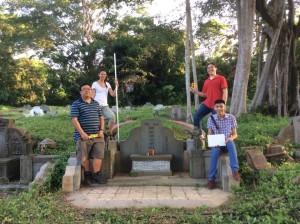
One for the album with the full team. Andrew on the left , Simone, Joshua and Wei Ming with his drawing, (photo Ee Hoon)
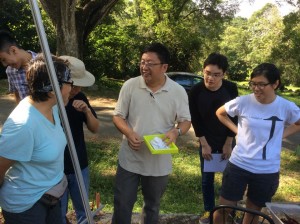
Dr Lai Chee Kien (third from left) sharing a light- hearted moment with his students (photo Ee Hoon)
***
Editors note
Documenting and taking precise measurements provide valuable data to analyze the proportions and variations through IT applications and ultimately relate it to Feng Shui. Tombstones are not just built, they are “feng shui’ed” Citizenry participation in a project like this is crucial because of the sheer size of Bukit Brown and because it signals a deeper engagement of ordinary people in wanting to understand all aspects of Bukit Brown. So kudos to Lai Chee Kien for this initiative and the first batch of participants for signing up. Hopefully there will be more.
What the tomb measurement workshop covered here.
In a report, published on Sunday, 22 June, 2014, Bukit Brown emerged as among the top 3 sacred sites in Singapore, voted by readers in a Straits Times poll.
On learning of the news, Claire Leow, co founder of All Things Bukit Brown reflects:
“To see the Singapore Heritage Society recognised is most apt, for they sparked the civil society response back in November 2011.
To see the Brownies identified as a group is itself moving, as this disparate group of volunteers, heritage enthusiasts and selfless sharers of knowledge and skills has been utterly inspiring. You don’t get more organic than this community, active on site, offsite, beyond keyboards and in cyberspace. Hats off to sifu Raymond Goh and Charles Goh for their inspiration.
And to see others rally behind the Brownies, to cheer us on, to lift us up when we are down, to join us when we utter the rallying cry to stand up and be counted, to share sunny weekends and stormy ones at Bukit Brown, and just patiently adding to the knowledge we are just uncovering day by day, gently correcting our mistakes, boldly stepping in with expertise, shaping the very history of this campaign. Amazing. Very moved……”
Bukit Brown – one of the three sites Singaporeans voted as a sacred place.
******
The overgrown graves stretching for 200ha bang amid the city bustle make for a restful, peaceful spot rare in urban Singapore.
But when Bukit Brown Cemetery was slated for redevelopment for roads and residential buildings, it was more than its lush beauty that resulted in that rarity in Singapore – vocal protests to preserve it.
The site tugged at Singaporeans’ heartstrings, being the resting place of many forefathers of the country, a living repository of the Chinese diaspora’s tomb culture and design, and where descendants today visit for traditional rituals such as tomb sweeping.
Two civil societies – the Singapore Heritage Society and heritage enthusiasts who dub themselves “the Brownies” – organised petitions and embarked on efforts to document tombs.
No substantial concessions were made by the Government, however, to save the site from an eight-lane road running across it. It is also slated for residential development beginning with its southern portion.
Yet, it’s among the top three sites that Singaporeans deemed as “sacred” places in a recent Straits Times poll.
The poll itself followed a call by academic Kishore Mahbubani, dean of the Lee Kuan Yew School of Public Policy, for a list of sacred spaces and places to foster a love for Singapore, to help it fully become a true city.
Singapore already has essential aspects such as “busyness” and being “safe”, he said in a commentary in The Straits Times, citing American urban geographer Joel Kotkin. However, it lacks the sacred, he said, which Kotkin defines as any unique institution or spot “that (makes) one feel an irrational commitment to a place”.
Certainly, pockets of the population saw the Bukit Brown protests as verging on irrational, given the need for more roads in congested Singapore.
Still, Professor Kishore’s commentary comes amid increasing efforts to make more of Singapore’s heritage, such as the conservation bid by Pearl Bank Apartments’ owners in April.
And it puts the spotlight on the approach to heritage preservation. Insight looks at the challenges and what more might need to be done.
Blunders of the past
In 2004, Singapore’s red-brick National Library building was unceremoniously razed to the ground to make way for the Fort Canning Tunnel.
Built in 1959, it was considered by some as architecturally undignified compared with its grander neighbour, the National Museum of Singapore.
Despite extensive efforts by the community to save the space – with a normally passive public penning angry forum letters in the media, and architects such as Mr Tay Kheng Soon proposing alternatives, including re-routing the tunnel – the dissent was swept under the carpet.
Experts say this marked a turning point as it sparked a rise in civic activism and was when Singapore’s conservation movement took root.
It crystallised the idea that heritage conservation and preservation goes beyond protecting splendid colonial buildings to encompass our social and cultural soul.
Retired shipping manager Yeo Hock Yew, 65, says the library had been part of his life since he was a schoolboy studying at nearby St Joseph’s Institution.
“In my university years, I headed there to do research and, as a father, I brought my children there every Saturday morning.
“It was part of the whole landscape of bookshops from the Bras Basah row and the MPH building in Stamford Road. If you couldn’t afford buying from these places, you headed to the library.”
During Singapore’s early years as a new nation in the 1960s and 1970s, swathes of the country fell victim to the wrecking ball. The Government’s main priority, understandably, was to improve living conditions and build up the economy.
Still, awareness of the need to save heritage sites began to emerge. In 1971, the Preservation of Monuments Board (PMB), which last year became the Preservation of Sites and Monuments (PSM), was set up to provide legal protection for national monuments. The division now falls under the wing of the National Heritage Board (NHB) and its role includes offering monument owners guidance and regulatory support.
The board itself is the big daddy of Singapore’s heritage custodianship, promoting heritage appreciation through managing its national museums, documentation and outreach efforts.
Then there is the Urban Redevelopment Authority (URA), established in 1974 and charged with studying old buildings for possible conservation as part of land use planning.
On the private scene,the Singapore Heritage Society, a non-governmental organisation, was established in 1987.
Academics note that people are talking more avidly about heritage than they did 10 to 15 years ago. “People have grown more expressive about protecting their heritage. It has become part of public discourse,” says Professor Johannes Widodo.
This has also given rise to the recognition that there are new categories of heritage which deserve protection……Read on here
“Moving House”
The Story behind the Painting
by Alvin Ong
The story of 3 affected graves at Bukit Brown not too long ago inspired a revival of family interest; Tan Yong Chuan (Blk 4, Div C), Tan Tiam Tee (Blk 3, Div B), Wee Geok Eng Neo (Blk 4, Div 6) were exhumed in May 2014. Old photos were unearthed from family albums, and heirloom objects from another era suddenly came to light. For the first time in decades, stories and narratives unlocked themselves from these objects and brought new layers of meaning to the notions of home and identity.
Tan Tiam Tee was the son of the magnate Tan Hoon Chiang (buried in Bukit China, Malacca), one of the founders of the Straits Steamship Co. His wife, Wee Geok Eng Neo, and his son, Tan Yong Chuan were all affected by the proposed highway.
(click on images for a bigger view)
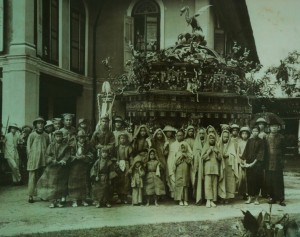
Funeral of Wee Geok Eng Neo, nee Mrs Tan Tiam Tee. Upper Thompson Rd, 1926. (photo courtesy of Alvin Ong)
Funeral of Tan Yong Chuan, died age 29, 26 November 1937, Neil Road. (photo courtesy of Alvin Ong)

Descendants at the tomb of Tan Tiam Tee, holding his portrait during Cheng Beng -tomb sweeping festival, 2012 (photo courtesy of Alvin Ong)

Descendants at the tomb of Tan Yong Chuan, Cheng Beng-tombsweeping festival , 2012 (photo courtesy of Alvin Ong
Miniature cooking pots were interred in Mrs Tan Tiam Tee’s tomb, presumably for her to cook in the afterlife, along with a pearl sanggul, and bracelets. According to my relatives, a set of gold teeth with an engraved heart shape was also found in Tan Yong Chuan’s tomb.
****
Tan Yong Chuan (son of Mr and Mrs Tan Tian Tee) was finally reunited with his wife for the first time in Holy Family Columbarium after 77 years. The columbarium has an unusual regulation that all photos of the deceased must be in color.
No color photographs of the deceased had existed at that time, so with the help of numerous correspondences, scans were digitally emailed, and the photos doctored and hand-painted.
Studying overseas has allowed the artist the space, physically and emotionally, to explore ideas of home and identity. These graves were only re-discovered shortly after the redevelopment plans were announced. The sight of the many abandoned tombs on the artist’s first visit to Bukit Brown had sparked questions about what happened to the descendants of the people who were interred there, which in turn, prompted the artist to explore if there were indeed any family connections to the cemetery at all. Beyond the historical and material significance of the place, it also felt like a site where mystery, the past, and present all came together. Reuniting with the tombs for the first time in many years became an emotional moment for some, and it also made us feel as though we have touched history, an experience that is becoming exceptionally rare in Singapore.
These were ideas that all came together in the painting, which were almost auto-biographical in that they featured vignettes of the artist’s experience with the discovery of the pioneers of Singapore and his roots. One random memory was a trek with Raymond Goh to Seah Eu Chin’s grave; One of the Teochew stone lions guarding the perimeter of the tomb eventually found its way into the picture. Raymond was featured in the early stages of the work, but in the end, this idea of displacement, loss and discovery surfaced in the final version titled, “Moving House”.
This is not the end of the road. There is yet another tomb whose story remains waiting to be told, my maternal great grandfather, Peck Mah Hoe, pictured here. The artist will be heading to the Peck clan temple in attempt to uncover more. And hopefully, there will be more paintings to come.
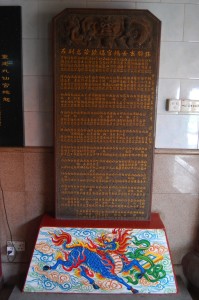
Stele in Peck clan temple with the name “Peck Mah Hoe” at the top, although the character for “Hoe” differs from the one on the tomb. Photo courtesy of Yik Han.
******
About the writer who is an artist :
Alvin Ong is reading fine art in Oxford, and did architecture at the National University of Singapore. In 2004, he was the youngest winner of the UOB painting of the year award at the age of 16. He had his first solo exhibition at 17, in the presence of His Excellency President S R Nathan.
by Raymond Ang
We visited Bukit Brown on a warm Saturday morning on June 7th , to find that the usual scene to the cemetery gates changed. There are now fences leading all the way to the gates. Clearly the construction for the highway has started.
I had brought my students from the Jakarta Nanyang School here to Bukit Brown to learn more about the links between Indonesia and Singapore. The students sweltered in the humidity. I had two groups and one group had lost their way. They had set off from Nanyang Girls’ High School and one of them took a wrong bus.
Beng from the heritage group for Bukit Brown arrived on his bicycle dressed in green cargo pants and wellies. He wore “the” plastic Casio digital watch – the one I wore growing up in Secondary school. He had jerry rigged a plastic bottle to act as a mud guard for the rear wheel of his bicycle. I knew I was going to like him already.
Just as Claire arrived in a taxi, the group that was lost called me on the phone. They were still trying to figure out where they are. Their teacher was from Jakarta too and didn’t know her way around. We decided to start the walk with the one group of students first.
Claire led the way and started to draw connections between the pioneers’ lives, history and culture in Singapore and Indonesia for the students. The tombstones started to mean more than just a random collection of stone, concrete and tiles. The Japanese attack and occupation of Singapore was a large theme – Mr Tay Koh Yat had fled to Batavia on the second last day of the fall of Singapore.
Mr Lee Kuan Yew had family ties in Indonesia. Though bothered by mosquitoes and the heat, the students trudged on. Beng brought out his insect repellant and sprayed the students down. I had told the students to bring some repellent yesterday, but I guess no one did.
We found out that the other group were on the other side of the hill – Mount Pleasant. Beng offered to go get them and dashed off on his bicycle. Claire drew the connections between saga seed and karats for diamonds; between colourful European tiles, Japanese innovation and adaptation and the Ming Chinese influence on Dutch kitchen tiles.
We visited Ong Sam Leong’s tomb and learned about fengshui and distinctive role of Sikhs in Singapore’s colonial history. This is the Nanyang style. One of my students asked me what would happen when the highway gets built. I replied that all this would disappear eventually – she didn’t seem to quite understand. “But it is interesting”, she said. “Yes I agree. I don’t think there is anything else quite like it in the world.” She frowns. “So it would all be gone?”. I nodded. It was sweltering hot. Some of the students were running low on water. Beng pulls out his canteen and starts topping up bottles. I feel very grateful and touched, but wasn’t sure how to express that. So I just smiled and made a mental note.
We ended the tour with a visit to Mr Tan Chor Nam’s tomb. It is simple and distinctively modern. A rectangular plot with a black rectangular headstone. No angels nor lions here. Herein lies one of the founders of Nanyang Girls’ High School. I asked the students to observe the differences between this tomb and the others we have visited in the morning – they could clearly see the difference. The principle of Nanyang Girls High (Singapore), Mdm Heng had told me once that Mr Tan Chor Nam had died a simple man – apparently he had dedicated a large part of his fortune in setting up the school. I tried to draw the connections between Nanyang Girls’ High School and the sister school in Jakarta, and asked the students to maybe think about how they would like to be remembered in the future.
For me Bukit Brown is a reminder that we stand on the shoulders of giants who have come before us, and shaped the environment in which we have grown and “become”. “What would your legacy be?” I asked? The students looked back at me without speaking. It was a serious question. Maybe too serious. I smiled and said, “alright, you don’t have to tell me. Just think about it.” I hope they do.
****
Raymond Ang, a Singaporean, is the Head of Experiential Education Centre at the JNY, the Jakarta Nanyang School. He requested a visit to Bukit Brown when his students were on a week long learning journey to Singapore. Brownies Claire Leow and Beng Tang, who stepped up to the plate, despite the late notice, were very impressed with how engaged the students were and their independence as they had to find their own way to Bukit Brown.
The Straits Times published a letter from the Singapore Heritage Society and All Things Bukit Brown 15th May, 2014 in response to an ed-op piece ” Can Civic Society Influence Policies on 12th May. The edited letter is available here
We reproduce the original and highlight key parts which were edited :
We refer to the article by Assistant Political Editor Leonard Lim claiming that civil society groups “extracted concessions on Bukit Brown cemetery” in his opinion piece, “Can Civil Society Influence Politics?” (ST, May 12, 2014).
As key players of the civil movement trying to protect and preserve Bukit Brown, we are unclear as to what “concessions” Mr. Lim is referring. It is now a well-established narrative that officially in 2012 when the road was announced, the decision to build a highway through Bukit Brown had already been made. We state for the record we were present at a briefing by the Ministry of National Development but that there was no consultation or protracted engagement thereafter to extract any concessions. We issued a call for a moratorium and moved on.
Mr. Lim references a subsequent decrease in the number of graves planned for exhumation for the 8-lane road across Bukit Brown from an estimated 5,000 as part of a compromise reached with civil society. This is not the case.
There are two points to clarify to prevent this misstatement of facts from being (repeatedly) perpetuated. One, the number of graves finally affected was reduced not to 3,764 as stated in Lim’s article, but to 4,153. The error occurred because Mr. Lim quoted from a Land Transport Authority (LTA) announcement in a March 19, 2012 statement on the realignment of the road. It was in an August 5, 2013 statement by Urban Redevelopment Authority (URA) and LTA to announce the award of the contract for the road that the final tally of affected graves was issued. Two, both statements clearly attributed the realignment of road to an engineering decision, and the drop in the number of graves affected had nothing to do with consultations with civil society.
On the second point, we draw attention to the LTA statement that announced that the road design includes a bridge over several creeks in Bukit Brown rather than a design that will see a filling up of these natural drainage networks with soil. There was no consultation on the original design or its changes. It is not clear if the adjustment was a result of a yet-undisclosed, but limited-scope Biodiversity Impact Assessment that the LTA conducted in early 2012. Regardless of the reason, that this change in design has been reported several times in your newspaper to be a result of a “compromise” with civil society is erroneous and needs to be corrected so as not to be repeated.
To date, there is likewise no consultation about the zoning of the greater Bukit Brown area in its entirety for residential use in the 2013 Draft Land Use Master Plan released by the URA. This area includes the larger cemetery complex comprising Bukit Brown, Seh Ong, Lau Sua, and Kopi Sua.
Now that we have clarified the events of 2012 and the decisions announced thereafter on official record, we would like to focus on the present and note that we have been meeting with the National Heritage Board since mid-2013 and hope to make more progress in protecting Bukit Brown. We write to clear the air so discussions are based on facts, not misrepresentations, and the public is not misled.
Signed:
Chua Ai Lin (Dr) President, Singapore Heritage Society, Claire Leow (Ms) co founder, All Things Bukit Brown
****
The original article reproduced here for reference, highlighted paras on Bukit Brown :
ST Opinion, May 12, 2014
Can civic society influence policies?
By Leonard Lim, Assistant Political Editor
THE large, spreading banyan tree once had such a thick canopy that little sunlight could filter through, hindering the flourishing of any plants below.
But, to borrow this metaphor of the State made famous by former minister George Yeo in 1991, it has been pruned somewhat in the past couple of years.
Consultation and engagement have become the buzzwords of government policymaking in a changed political landscape, with a more well-educated, well-travelled populace becoming more assertive and vocal.
There may be no better time for civil society – the wide spectrum of organisations operating outside the government and business sectors – to test this pledge to listen more, and in the process carve out a more influential role for itself.
They can take heart from the naming of Mr Tan Chuan-Jin last year as the Government’s unofficial point person for engaging with non-governmental organisations (NGOs). Mr Tan is Manpower Minister and a member of the fourth-generation leadership.
In 2012, Law and Foreign Minister K. Shanmugam met gay activists to discuss matters such as discrimination and the anti-gay sex law Section 377A.
The State’s engagement with other interest groups on animal rights, heritage and conservation as well as environmental awareness has also increased.
Civil society has scored significant victories recently as well, influencing legislation and government policy.
Since the start of last year, foreign maids – either with a new work permit or a renewed one – have been entitled to a day off every week, or must be paid a day’s wages in lieu.
As contracts last two years, all maids will, by next January, be on new contracts that have to abide by the rule. The change came about after a decade of lobbying from groups championing the rights of migrant workers.
Laws on sexual crimes have also been repealed.
It started in late 2011, after an article highlighting a little-known section of the Evidence Act was put up on website publichouse.sg. The Act allowed a man charged with rape to discredit the victim by digging into her sexual history, and showing she is of generally immoral character.
Mr Andrew Loh, who runs the site, circulated the post to several ministries to get a response.
He received a call from the Law Ministry suggesting a meeting, but turned it down as he felt the Association of Women for Action and Research (Aware) was the expert on the topic.
Mr Shanmugam eventually met representatives from the women’s rights advocacy group and later started the process of amending the Act.
Nature lovers, who in 2001 succeeded in getting the reclamation plans for the Chek Jawa wetlands area shelved, also extracted concessions on Bukit Brown cemetery recently.
Several nature and heritage groups opposed the construction of a road that would slice through the historic graveyard.
It is the largest Chinese cemetery outside China, and among the thousands of graves are those of philanthropist Gan Eng Seng and Lee Hoon Leong, grandfather of founding prime minister Lee Kuan Yew.
After months of engagement, a compromise was reached and the authorities changed the road’s design so that the number of graves exhumed fell from 5,000 to 3,746.
But there are also many examples where civil society’s push for change was not successful.
Earlier this year, several activists took issue with the Government’s tabling of proposed legislation to keep the peace in Little India following last December’s riot.
They argued that the parliamentary Bill placed too much focus on alcohol as the cause of the riot, and this might influence a Committee of Inquiry’s deliberations.
Several non-partisan Nominated MPs criticised aspects of it. But it was passed, with the Government explaining that the new laws would give the police powers in the neighbourhood for a year until longer-term measures could be enacted.
Other recent civil society proposals that were rebuffed include calls to introduce a poverty line to reduce income inequality, and the withdrawal of licensing regulations of news websites, which some saw as onerous and curbing free expression.
But groups can take heart that “the Government has and will continue to engage civil society as an essential partner in dealing with the important issues that face Singapore”, as Mr Shanmugam’s press secretary wrote in a letter to The Straits Times Forum page last November.
Still, even as the political leadership indicates a greater willingness to engage, there is always the lingering question mark over whether a civil society group’s actions or statements are deemed to have crossed into the political arena, thus risking censure from the Government.
This longstanding stance of politics and political comment belonging only in the realm of party politics can be traced back to the fledgling days of the People’s Action Party.
In the 1960s and 1970s, leftists used trade unions and cultural groups to garner support against the party.
A recent incident involved activist Nizam Ismail.
In April last year, the lawyer was accused by the Government of using the Association of Muslim Professionals (AMP) as a platform for pursuing partisan and racial politics, a claim which he denied.
He resigned from his AMP leadership positions, saying he was told the Government had taken issue with his online comments and participation in political events that he said he did in his “personal capacity”.
In the wake of the furore, Mr Lawrence Wong, Minister for Culture, Community and Youth, said in May last year that the Government welcomes feedback on policies even if they may be critical, as this helps improve public policy for the benefit of all Singaporeans.
But NGOs “should not be used as a cloak for partisan political objectives”, he stressed.
“Similarly, while individuals in the NGOs are free to express their views, they should not use their organisations to pursue a partisan political agenda,” he added.
The goals of civil society in wanting social transformation, however, mean these limits will inadvertently be tested on occasion.
Still, if the saplings under the banyan tree are to take root and thrive, much will depend on how willing Singapore’s civil society is to push the boundaries and extend its reach in this new landscape.
limze@sph.com.sg
by
Cherlyn Lee Suet Yean
I am a Junior College student who loves history and writing poetry. To me, history is a grand story with so many interesting details waiting to be discovered. In my free time, I love taking long walks around Singapore, letting my feet absorb the atmosphere of different places. I learn so much about Singapore’s history that way.
Naturally, I am interested in Bukit Brown because it is full of history. In fact, I went there earlier this year. But amidst all the tombstones, there was one that held a special resonance for me—the tombstone of Khoo Seok Wan. He was a poet and a scholar, and his life story is particularly fascinating because it contains all the vicissitudes of life.
I became interested in visiting Khoo’s tombstone after I attended an excellent exhibition on him at the National Library. He was born rich but became poor, and died of leprosy. But what really struck me was the beauty and immediacy of his poems, written in classical Chinese style. He is refreshingly honest about his poverty, and his poems chronicle details of his daily life very poignantly.
I suppose I was also was able to identify because I write poetry. I enjoy writing poetry because I get to express myself, and it is a way to channel my emotions. So I decided to visit Khoo’s grave as a pilgrimage to seek inspiration, and to pay homage to a great poet.
For me, the poem of his that I loved most was “Reflections on Building my Grave”. It is by an immigrant who has reconciled himself to the fact that there is no return to the motherland, and his characteristic honesty (with himself) can be seen. He also reconciles himself to inevitable change, and the line “年年新綠到天南“, as much as it describes how grass will grow yearly around his grave, is a statement that accepts change. This is particularly fitting given the change that is happening now, with a road being constructed through Bukit Brown.
In fact, I recited this poem by his tombstone because it felt right to do so, like completing life’s cycle. In his acceptance of dying in a foreign land that has become home, there is perhaps a larger acceptance of change. Given that the highway will be constructed through his tomb, it is perhaps a way of sending him to his final rest. And this is fitting because of the way he stoically endured through the vicissitudes of life with courage and dignity.
This is my tribute to Khoo Seok Wan:
Visiting Khoo Seok Wan’s Grave
As I enter, a tripod covered with verdigris promises
That if I pause long enough, its invisible
Camera will capture me against a hill of tombs.
This afterimage will bewilder passing cars.
At Khoo’s burial mound I recite
“Reflections on building my grave”.
Translated, its crow-squawked syllables
Hover in the somnolent air. A creased map
Guided me here, amid the river of red
Inscriptions I cannot read.
The highway blueprint that sent in
An army of excavators must have been
A summons from the dead. Otherwise I
Would not have come to you
With a broom and a book of your poems.
“Reflections on Building my Grave” by Khoo Seok Wan
(translated by Shelly Bryant from the NLB exhibition)
in sea and on hills
little space even for my abode
how then may these buried bones
leap over the Sword Pond
even were you to call a third time
I will have no hope of rising
from Singapura’s soil [Xing zhou]
when I fall, at last, into repose
a petal brushes my headstone –
another butterfly repeats life’s circle
yet even in these grave markers
styles alter with time
like grass growing anew
in its season
with each passing year
changes again touch
our southern home
Editor’s note: Khoo Seok Wan was exhumed on 12 March 2014, with his grandson and his great grandsons in attendance.
by Sudhir Thomas Vadaketh
My wife and I went on a lovely tour of Bukit Brown, conducted by Fabian, lawyer-cum-history buff and very proud “Brownie”, on the morning of Saturday, January 25th 2014.
Before then, the last time I had visited Bukit Brown was in Junior College, when classmates and I would go there for a spooky tipple, more focused on whisky than history.
Only now do I realise how much I have missed. On that Saturday, I learned so much about Singapore’s past. Love the crazy characters: polygamists, guerillas, tycoons, benefactors, sometimes one and the same.
Although I have read much about the Bukit Brown controversy over the years, it is only after visiting that I have a deep appreciation for what we—as a country, society and culture—are about to lose.
Many of us decry Singapore’s rush to development, and GDP-maximising policies. When we speak about, say, high population growth or unnecessary destruction and rebuilding, it can sometimes get a bit abstract, the story lost in numbers and details. A visit to Bukit Brown illustrated the problem to me in a very visceral sense, in a way a thousand articles can never do.
It seems almost perverse that Singaporeans, myself included, will travel abroad and marvel at historical ruins and temples in places such as China and India, yet can stand by and allow a place of such historical import to be ripped from our soul. Our collective Singaporean identity is suffering, slowly, with each grave exhumed. I feel ashamed.
As a writer, I also drew a lot of inspiration from my visit. First, in terms of history, I learned a lot about Singapore’s connections to China and India. I am currently working on a book about the two countries, and Bukit Brown threw up some fresh ideas for stories. For instance, I started to think more about the role of Singapore-based revolutionaries, aside from Sun Yat-Sen, who is oft spoken about, in China’s 1911 revolution.
Meanwhile, it also occurred to me that there are many more interesting intersections of Chinese and Indian culture in Singapore, for instance the Sikh guards who protect the Chinese tycoon’s grave (see picture).
![Naked angel on the right, a scene from Romance of the Three Kingdoms in the middle. And on the left, guarding this Chinese tycoon's grave, is an Indian Sikh. #onlyinMalaya]](http://bukitbrown.com/main/wp-content/uploads/2014/02/Naked-angel-on-the-right-a-scene-from-Romance-of-the-Three-Kingdoms-in-the-middle.-And-on-the-left-guarding-this-Chinese-tycoons-grave-is-an-Indian-Sikh.-onlyinMalaya-1024x768.jpg)
“Naked Angel” on the right, a scene from Romance of the Three Kingdoms in the middle. And on the left, guarding this tycoon’s grave is an Indian Sikh (photo Sudhir Thomas Vadaketh)
Second, in a broader sense, I was also inspired by the greenery, architectural beauty, and solitude that Bukit Brown offers. Artists in Singapore often bemoan the city’s dry, insipid environment. A walk through Bukit Brown left me rejuvenated, in a way that the artificial icons like Marina Bay Sands and Gardens by the Bay will never do.
Exhumations are slated to be completed by the end of this year. For those of you who have yet to visit, please do. Especially those with children. Do take them—who knows what will be left of Singapore when they’re older?
(For more on my book about China and India, tentatively titled From Kerala to Shaolin, please see here.)
About Sudhir Thomas Vadaketh:
After seven years at The Economist Group, in early 2013 Sudhir left the professional world to write full-time. His literary interests concern the way grand socio-political systems influence ordinary people’s lives, their worldviews and their interactions with each other. He hopes to follow his first book, Floating on a Malayan Breeze, with narratives on Asia’s other great societies—he is currently working on a book about China and India. He has written for a variety of publications, including The Economist, The Straits Times and Yahoo! News.
Sudhir blogs at sudhirtv.com
Sharing our feedback on Bukit Brown in the Draft Masterplan. We are grateful to all who wrote and shared your feedback with us. Without your support, awareness of Bukit Brown would not be where it is now – not just a talking point but- a rallying point to enrich our identity, a respect for our heritage and a Singapore we can all call home. We are humbled.
***
“We met as volunteers and in response to a groundswell of feedback after the announcement of the plan for Bukit Brown, formed All Things Bukit Brown as a loose group of volunteers to support amateur historian Raymond Goh, people who might want to contribute time, research, translation skills, etc to raise awareness of the value of Bukit Brown. We subsequently created the blog, All Things Bukit Brown, (http://bukitbrown.com) and started organising social events onsite in December 2011 to gauge interest in Bukit Brown as a destination. We were happily surprised by the enthusiastic turn-out for 3-4 events and started guiding tours onsite with whatever knowledge we received from February 2012.
Since then, we have cobbled together a dozen committed volunteers who research and/or guide. We are pleased to report that in that time, we have guided 10,000 people to Bukit Brown, including secondary schools and tertiary institutions, overseas academics, and participants from the Lee Kuan Yew School of Public Policy and the Civil Service College. Former Foreign Minister George Yeo was an early visitor guided. We have also guided grassroots communities led by their MPs, including DPM Tharman Shanmugaratnam and Sylvia Lim. This weekend, Minister of State for National Development Desmond Lee will bring his grassroots community there too. Groups which have come include the elderly Chinese, the hearing impaired and the docents from the Sun Yat Sen Nanyang Memorial Hall , National and Peranakan Museums.
Bukit Brown has already inspired the students of Pioneer Junior College to co- write the book “1911 Revolution: Singapore Pioneers in Bukit Brown” which was launched last Friday at the Sun Yat Sen Nanyang Memorial Hall. On our part we have applied for a grant from the National Heritage Board to put together useful information we have gathered over the past two years as a guide book to Bukit Brown.
Imagine this, a grassroots effort to bring 10,000 people to a site without any amenities – no toilets, drinks stalls, resting stations, shelter from the rain, marked trails or trash bins. How much more can we do together when we put our resources together? Give us a chance.
As Singaporeans, we are very proud to share what knowledge we have and encourage interest in Bukit Brown. We have met many engaged Singaporeans, academics, students, tourists, photographers, artists, etc – a diversity of participants who have reinforced the notion that Bukit Brown is more than a cemetery but a public space that draws different communities there for different reasons. We are witness to the grassroots movement which has built up a valuable community with a strong outreach component. We hope that you see this element of a place in fostering communal ties and meaning. These are valuable to building a strong and cohesive society, people rooted to their identities and bringing Singaporeans and residents together in a meaningful way. It is not something that can be easily replicated without the actual space that first drew us together in the first place.
It is this community-building effort that also drew the attention of the World Monuments Fund in awarding Bukit Brown World Monuments Watch status. We are proud of this international recognition and hope that one day, we can twin Bukit Brown with the Botanic Gardens for a unique world heritage site unmatched anywhere else in the world. That it is set in such lush and spectacular settings makes Bukit Brown all the more special.
State recognition of Bukit Brown’s intrinsic value will lift tourist awareness of Singapore in a different way, opening up ideas (and revenue streams) for education tourism, battle site tourism, cultural tourism etc in the same way medical tourism has brought international attention (and revenue) to the world-class medical services available in Singapore. Already, heritage associations in the region, specifically Penang and Malacca, have displayed keen interest in Bukit Brown and we hope there would be attendant tourism effects for the better good of Singapore and her neighbours. Not only would Singapore benefit from state recognition of the heritage value of Bukit Brown, we can work together with tourism agencies around the region and reap the benefits of good neighbourliness and joint tourism campaigns. Indeed, we are not short on ideas. We ask for the state to demonstrate leadership in this.
We hope you will protect Bukit Brown and Singapore’s historical, cultural, wartime and natural heritage for future generations, and will have an open discussion on how best to protect Bukit Brown and other heritage and nature sites affected by the proposals in the URA Draft Master Plan 2013. National development includes supporting our Nation’s sense of identity and belonging across generations in addition to infrastructure.”
Claire Leow & Catherine Lim
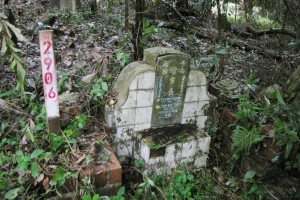
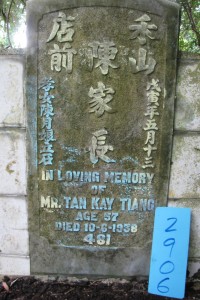

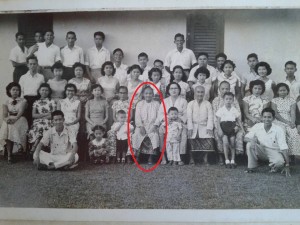

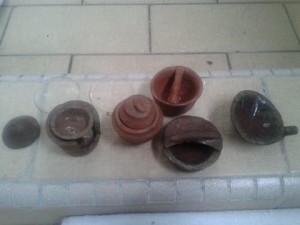

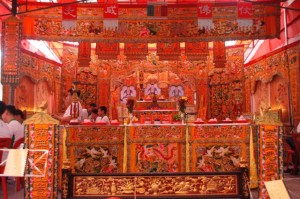
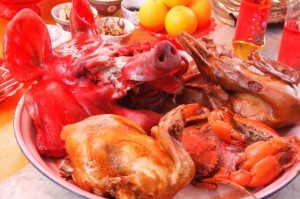

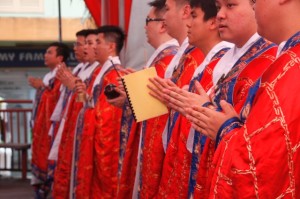
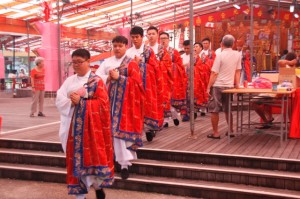
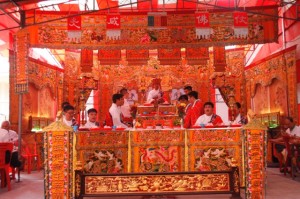

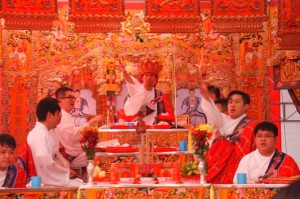
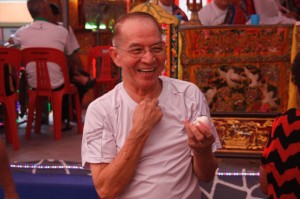
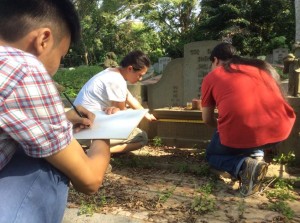
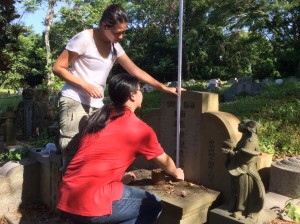


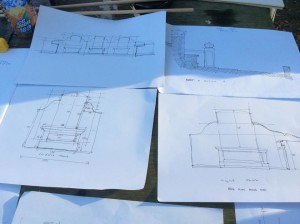

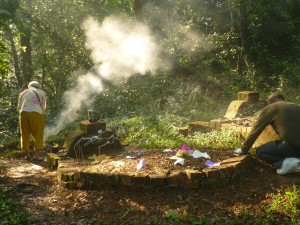

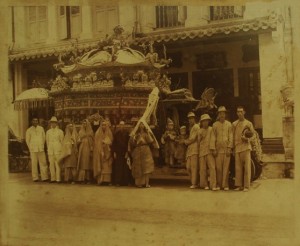
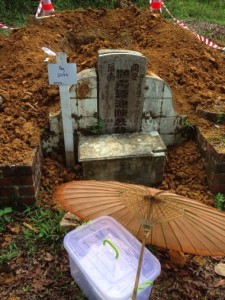
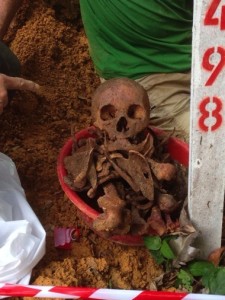
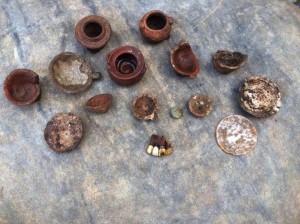

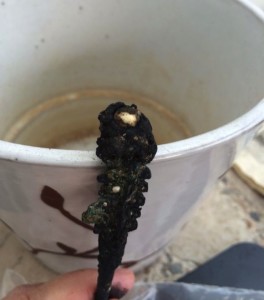
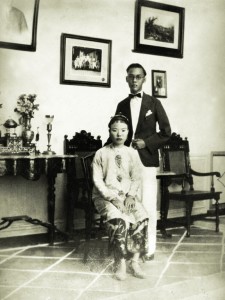
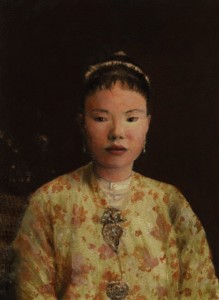


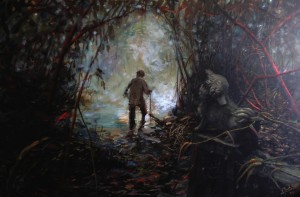
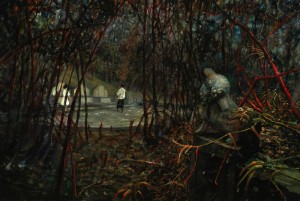


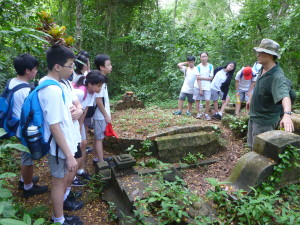
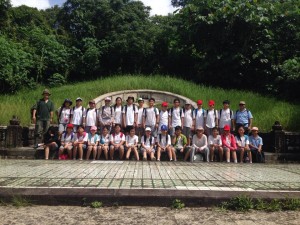




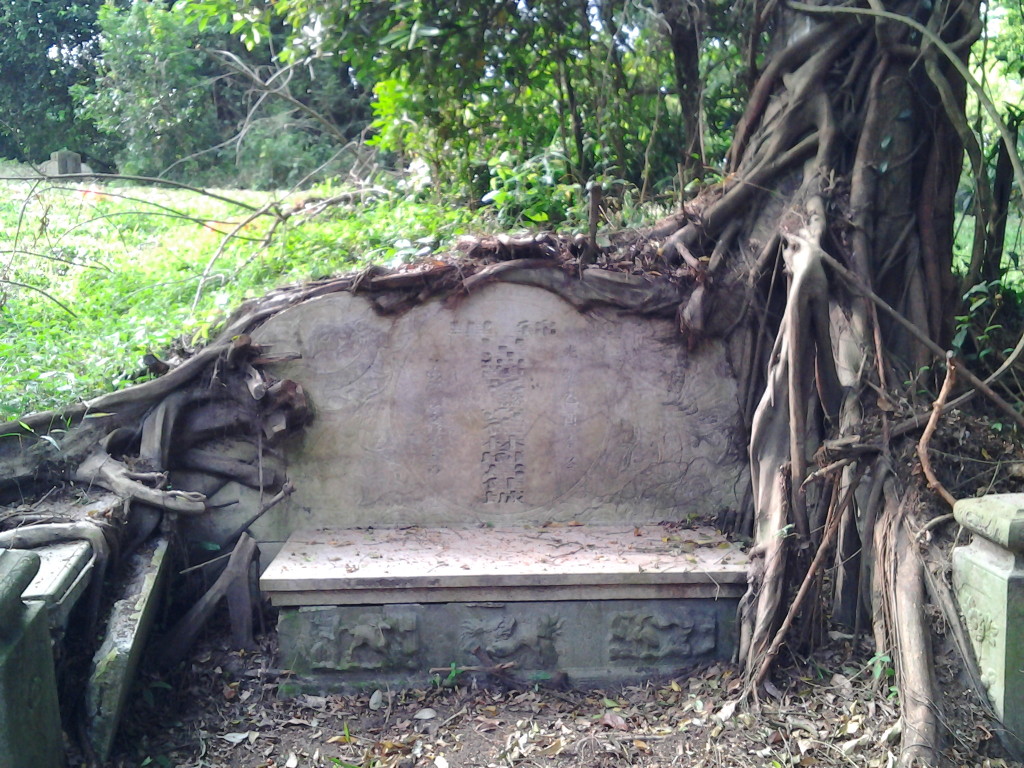

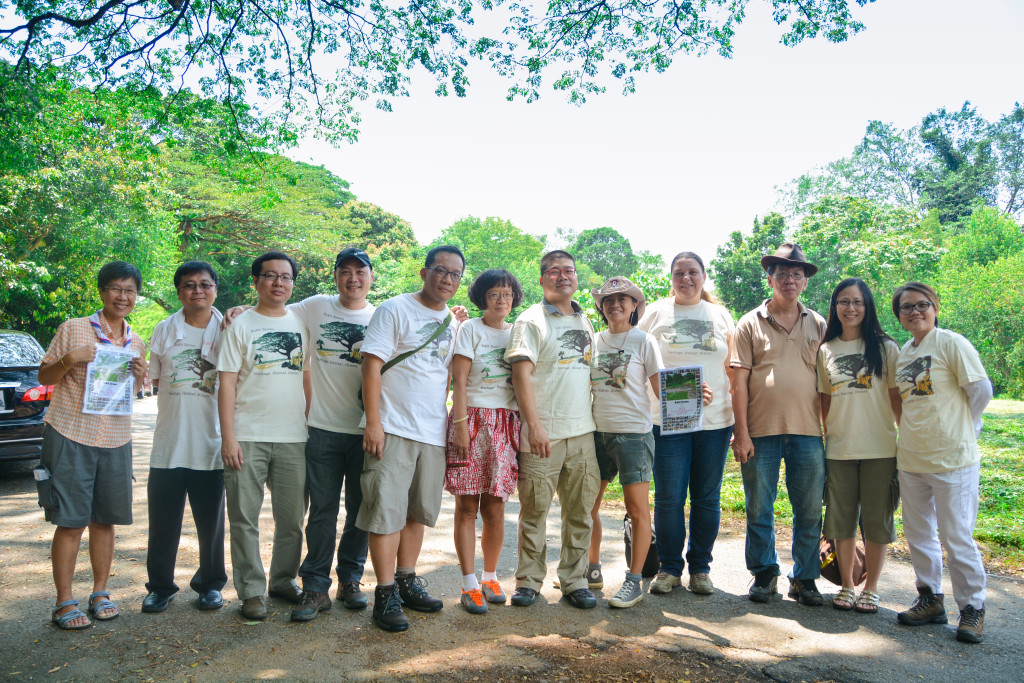
Recent Comments